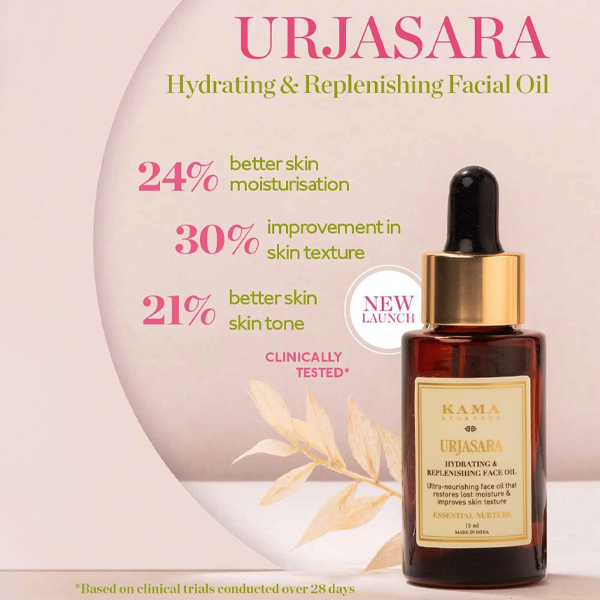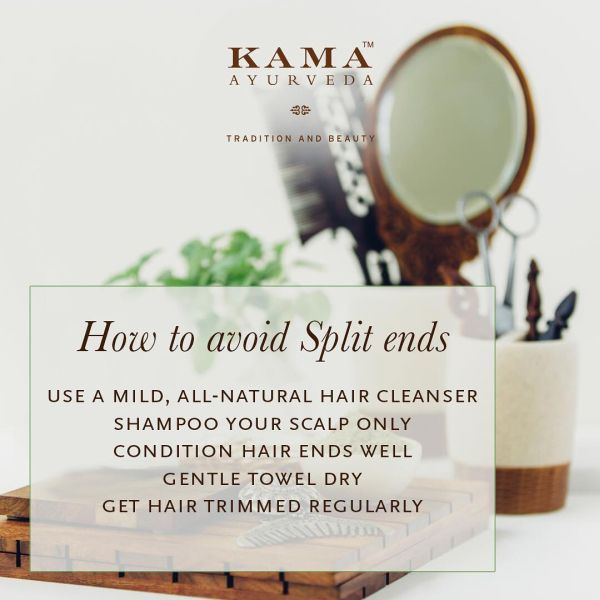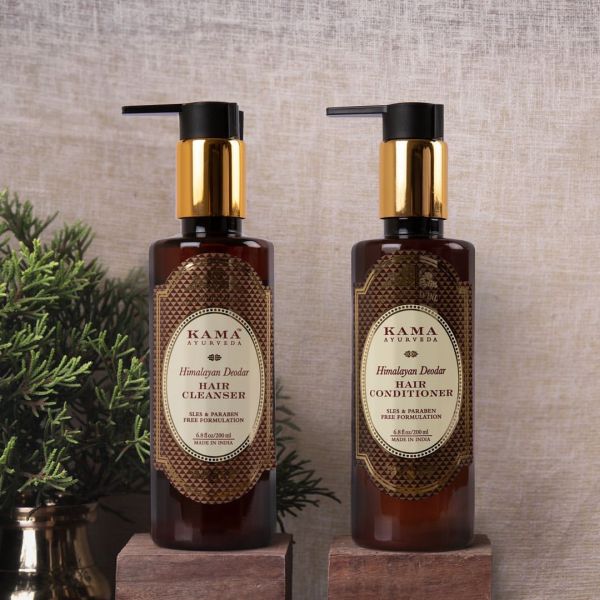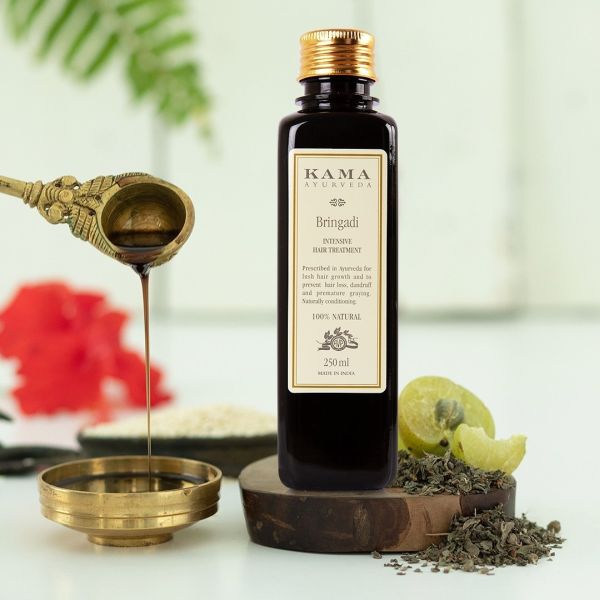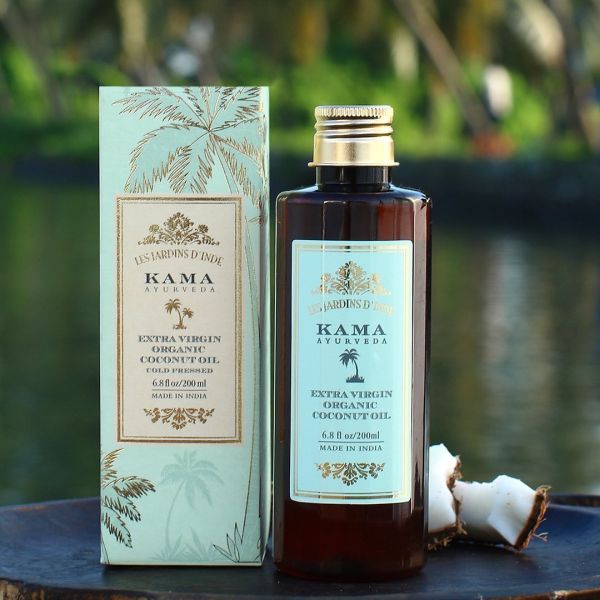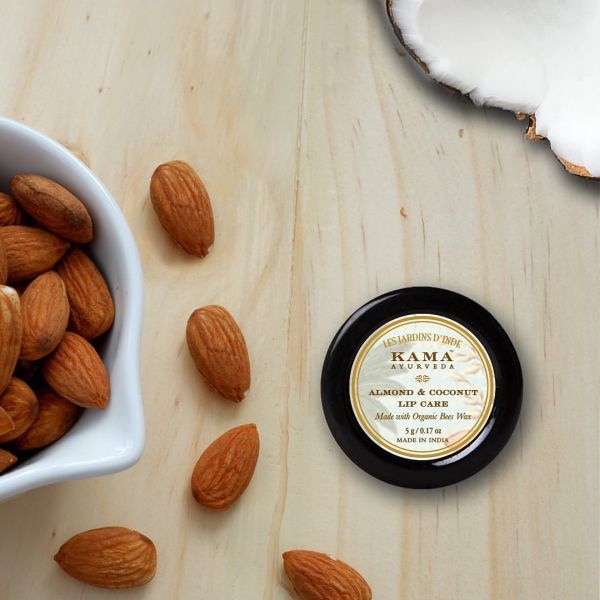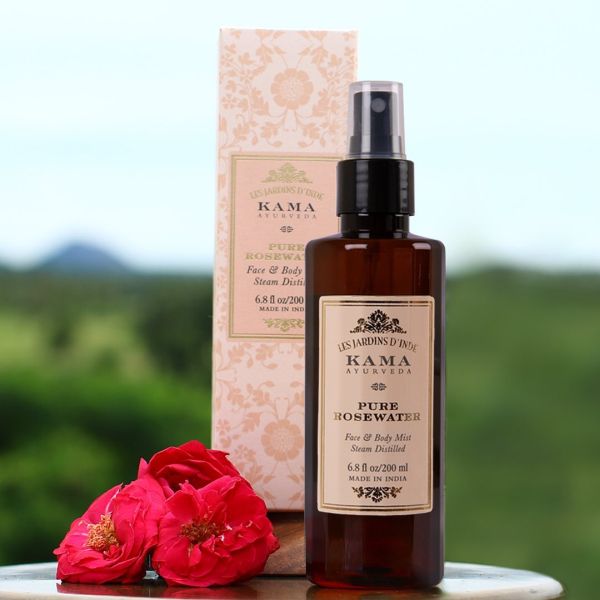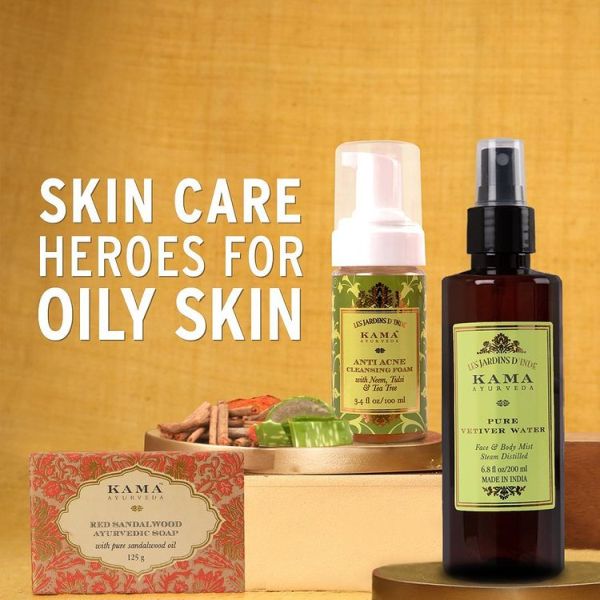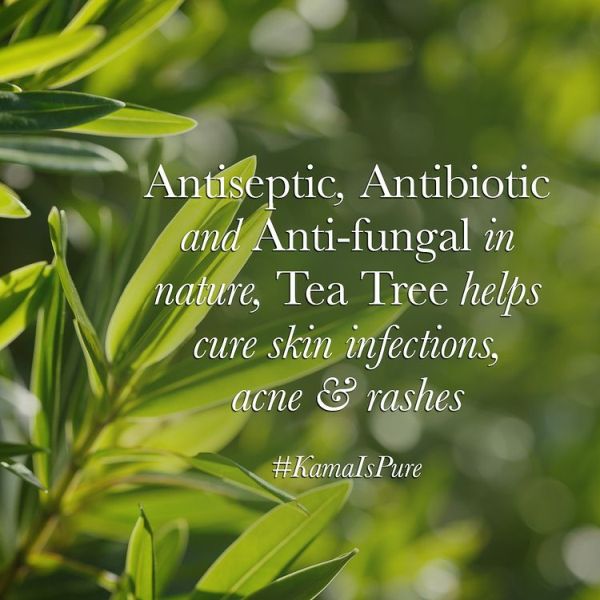From your grandmothers to Ayurvedic practitioners, everyone encourages new mothers to devote some time each day towards massaging their baby with a good baby massage oil. Are you curious to understand how regular massages can help your little one?
For babies, body massage is a great way to relax their nerves, strengthen their muscles and give them a good night's sleep. With tons of brands claiming to sell the best baby massage oil, it is pretty hard to pick the best one for your baby's soft and sensitive skin.
Are you looking for a high-quality massage oil rich in essential oils to provide the best skincare and nourishment to your baby? If yes, you’re at the right place. In this read, we will brief you about all the benefits of massaging your little one, the best massage oil to use, and a step-by-step guide to massage your baby the right way.

Benefits Of Baby Massage
Infant massage is not a new concept; historically it has been used as a way for moms to nurture and spend time with their baby. In fact, the first baby massage with oil dates back to ancient India, where it was incorporated into Ayurvedic medicine to improve their blood circulation, boost digestive function, get rid of toxins, and enhance their overall well-being.
Let's unpack some of the primary benefits of giving the baby a good message.
- Baby Massage Helps Premature Babies Weight Gain
A study conducted by "touch therapy" (a massage) on premature babies showed 47% more weight gain than premature babies who haven't received any messages.
A mother, Stephen Agakian, gave birth to her 1lb 5 ounces baby girl at 25 weeks gestation. She was then asked to massage her infant to promote growth and overall health. This is because numerous studies have proved that massaging the baby helps with healthy weight gain and increases bone density.
- Baby Massage Lowers The Chance Of Jaundice
A regular massage helps reduce bilirubin levels (a compound present in the blood that causes jaundice). It also helps boost the frequency of bowel movements, which helps eliminate excess bilirubin from the blood.
- Baby Massage Helps Reduce Stress
It is known that human touch can reduce stress and lower blood pressure in adults, and babies are no different. Human touch releases endorphins which drop cortisol. This results in increased babies' senses of safety and security, which brings them into a more balanced state of well-being.
A study found that a massage can be life-saving for premature babies. The researchers explained how a regular baby massage visibly reduces stress and promotes the maturation of the premature nervous system.
Read - Body Massage Oils recommended by Ayurveda
- Baby Massages Help Reduce Colic
You might have seen many infant rockers, seats, and swings having a vibrating feature. Have you ever wondered why? It is because vibration can help reduce colic (severe pain in the abdomen caused by an obstruction in the intestines) in babies.
But a prolonged time in baby containers and chairs is not suitable for the little one's overall development. A study showed how an infant massage could successfully calm a colicky baby instead of vibrating chairs and swings.
- Infant Massage Promotes Sleep
For a baby, massages help lower cortisol levels (the stress hormone) and stimulate melatonin production; which also helps regulate sleep cycles. A baby massage makes babies fall asleep faster and longer.
- Baby Massages Strengthen The Bond Between The Parent And Baby
The bond between mama and baby can be reinforced through eye-contact and skin-to-skin contact . A baby massage primarily benefits mothers with postnatal depression who can't bond with their babies .
These benefits don't just apply to mothers; a massage also helps reduce paternal stress and improves the bond between baby and daddy. They can connect and communicate with their children better.
Also read - Dhanwantharam Thailam for Massage During Pregnancy

- Baby Massages Relieve Constipation Or Gas
As infants have an underdeveloped sphincter in their esophagus, they struggle to burp on their own. This builds up gas in their system and leads to belly discomfort. Massaging the baby regularly and kneading your fingers under your baby’s rib gently in a clockwise direction helps in relieving that pressure.
- Baby Massages Enhance Learning
A massage promotes alertness, and when babies are more alert, they can learn more. A study where 4-month-old babies were given 8-minute massages showed that they responded more favorably to habituation tasks when compared to babies who hadn't received any massage (8).
- Baby Massage Treat Certain Conditions
Like how a massage helps improve many conditions in adults, it also helps treat conditions in babies and young children. A few of the pediatric psychiatric disorders that can be enhanced with a massage are - (9)
- Anxiety
- Depression
- Bulimia
How To Choose The Best Baby Massage Oil
Choose an oil that is easily absorbed into the baby's skin and is specially designed for their soft and sensitive skin. Never use heavy mineral oils, as they can clog the pores. Whichever oil you choose, make sure that it’s pure and unadulterated to avoid skin allergies or reactions. You should also stay away from oils that contain artificial dyes, artificial perfumes, parabens, PEG, or EDTA.
Here’s our top recommendation for the best baby massage oil.
Kama Ayurveda's Ayurvedic Baby Massage Oil
Kama Ayurveda's Ayurvedic Baby Massage Oil is a head-to-toe baby massage oil that helps soothe, soften, nourish, and protect your baby's delicate skin and keep it radiant and healthy. Created from 12 potent Ayurvedic ingredients as included in the ancient Ayurvedic text of Ashtanga Hrudaya, this oil is very calming and deeply nourishing.

Sesame oil, forming the base of this moisturizing massage oil, is enriched with protein-rich Whey to soothe and soften the delicate skin. The healing Sandalwood, Kutaki, and Turmeric extracts in the oil help prevent scarring, treat conditions, and keep the complexion soft and radiant.
The extracts of Dill and Deodar help protect your little one from cold, cough, and fevers. Being rich in antibacterial properties, Nutgrass, Licorice, and Costus fight skin infections while keeping your baby's skin soft, supple, and smooth.
Benefits Of Kama Ayurveda's Baby Massage Oil
- Kama Ayurveda's Ayurvedic baby Massage Oil is 100% natural. It is perfect for daily use and can be applied head to toe.
- It helps in preventing scarring and moisturizes the skin deeply.
- It fights skin infections and prevents the baby catching a cold, cough, and fevers.
How To Use:
Warm the oil lightly and gently massage the baby's hair, face, and body. Let the oil sit for about ten to fifteen minutes before cleansing the skin with mild baby soap and lukewarm water.

Follow this massage with a lukewarm bath using natural soap. Post bath, use a deep moisturizing oil such as Sweet Almond Oil.
Read - 10 Amazing Benefits of Almond Oil For Hair, Body, and Skin
How To Give Your Baby A Good Massage
Whether you are soothing your infant to dreamland or easing their gassy belly, a massage works like magic for your baby. All the power lies in your tender, loving touch.
The following basic tips and techniques will help you give the most relaxing and comforting infant massage.
- Create A Calm Atmosphere
For better results, the experts always suggest giving the massage in a warm, quiet place (either outdoors or indoors). Make yourself comfortable by sitting on the bed or floor, or stand in front of the changing table. Then, make sure to position your baby comfortably in front of you, on a towel or a blanket. Maintain a comforting eye contact while undressing the baby, and tell him that it's massage time.
- Control The Touch
Always use a gentle touch while massaging your baby in the initial stages. However, as the baby grows, you can have a firmer touch. Don't tickle the baby, as it might irritate him/her.
- Slowly Knead Or Stroke Each Part Of the Baby
- Start with the legs and feet. Hold the baby's one heel in one hand, and use the other hand to massage from the top of the thigh and make slow strokes to come down all the way to the ankle.
- You can gently squeeze the leg as you go up again, just like how we milk a cow. After a few times, reverse the motion and repeat the procedure (ankle to thigh).
- Now gently uncurl and stroke the toes of the baby. Next, rub their feet with your thumbs. Then switch legs. Repeat the same for the arms and hands too.
- Next, move to the top of their head. Place your hands on both sides of the baby's head and start running your hands on both sides of the body (from head to toe). After that, massage the head gently using tiny circular motions with your fingertips.

- Now massage the baby’s face by using gentle motions with your fingertips. Use your thumb to draw a smile on the baby's face (stroke from one cheek to the other cheek across the lips).
- Next, move to the baby chest. Fold your hands on the baby's chest to push out to the sides (just like how we smoothen the pages of an open book).
- While massaging the tummy, draw an oval shape, moving clockwise to follow the natural path of digestion. From there, walk your fingers from one corner of the stomach to the other corner on the diagonal ( make an "X").
- Place your baby on his/ her stomach and massage their back by stroking side to side and then up and down.
- Stay Relaxed And Release The Tension
Communicate with your baby throughout the massage while keeping an eye contact. You can either sing or tell a story. Repeat the words like "relax" in a calming tone to help release his/her tension.
- Notice How Your Baby Responds
If your baby jiggles his/her arms, it means he/she likes the massage. So, you can continue doing the massage. Stop the massage if your baby turns his/her head away from you and seems unhappy or restless. Try again later without putting much pressure.
FAQS About Baby Massage
- Which Massage Oil Is Safe For My Baby?
Unless your baby has a rash or very dry or sensitive skin, you can use any pure and natural oil like Almond Oil, Sesame Oil or Coconut Oil to massage your baby. We strongly recommend Kama Ayurveda’s Ayurvedic Baby Massage oil with 12 potent Ayurvedic ingredients with immense benefits for the baby.
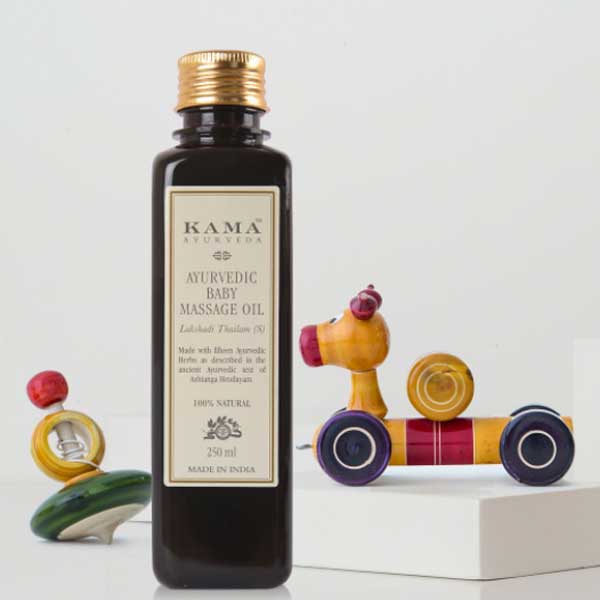
Experts favor oils that are more easily absorbed into the skin, like plant-based or vegetable oils. These oils are also easy to digest if your baby sucks the oily fingers. If you opt for vegetable oil, go for the pure, refined oils as they have a mildew smell, thin texture, longer shelf life, and very few chances of containing impurities like molds, fungal spores, and yeast.
- Which Oils Are Not Good For My Baby?
If your baby's skin is dry, sensitive, broken, or has eczema, it is better not to use clarified butter (ghee), Mustard oil, or Olive oil to massage your baby. It is because ghee, mustard, and olive oils are rich in oleic acid, making your baby's skin layers more permeable. In simpler words, applying oils rich in oleic acid can make your baby's skin more tender and dry.
Aromatherapy essential oils like Chamomile oil, Tea Tree oil, and Lavender Oil are unsuitable for the baby's sensitive skin and should not be used. If you aren't sure which oil can be used for your baby, contact your baby's doctor and refer to his opinion. He might suggest a perfume-free, non-alcoholic oil, lotion, or cream suitable for your baby's skin type.
Also, if your baby's skin becomes sore, itchy, flaky, or red post-massage, stop using it immediately.
Read - Home Remedies For Dry Skin – 10 Ways To Soothe Dryness
- When To Massage My Baby With Oil?
Usually, in India, oil massages are done before bath time. This is a great idea, primarily if you use a thick oil that does not get fully absorbed into the skin.
However, some oils like Almond Oil leave a thin film on the skin to retain moisture from the skin. Such oils can be used after a bath as they slow down water evaporation, thus helping in retaining skin moisture. This is an excellent option if your baby has dry skin.
Read - How To Remove Stretch Marks Naturally

- Should I Use Oil In Hot And Humid Weather?
Some experts believe that if oil remains in the skin in hot or humid weather, it can clog pores and trap sweat. This is similar to the oil applied after a bath; it traps moisture-clogging pores. When the skin stays moist in hot and humid weather with sweat, it is more likely to cause a heat rash. Therefore, to avoid the risk and be on the safe side, massage the skin with oil before the bath and rinse it off well.
Experts also suggest using only enough oil to help your hands glide smoothly on the baby's skin. Applying oils in a heavy layer can make your baby itchy and hot, especially in hot and humid weather.





